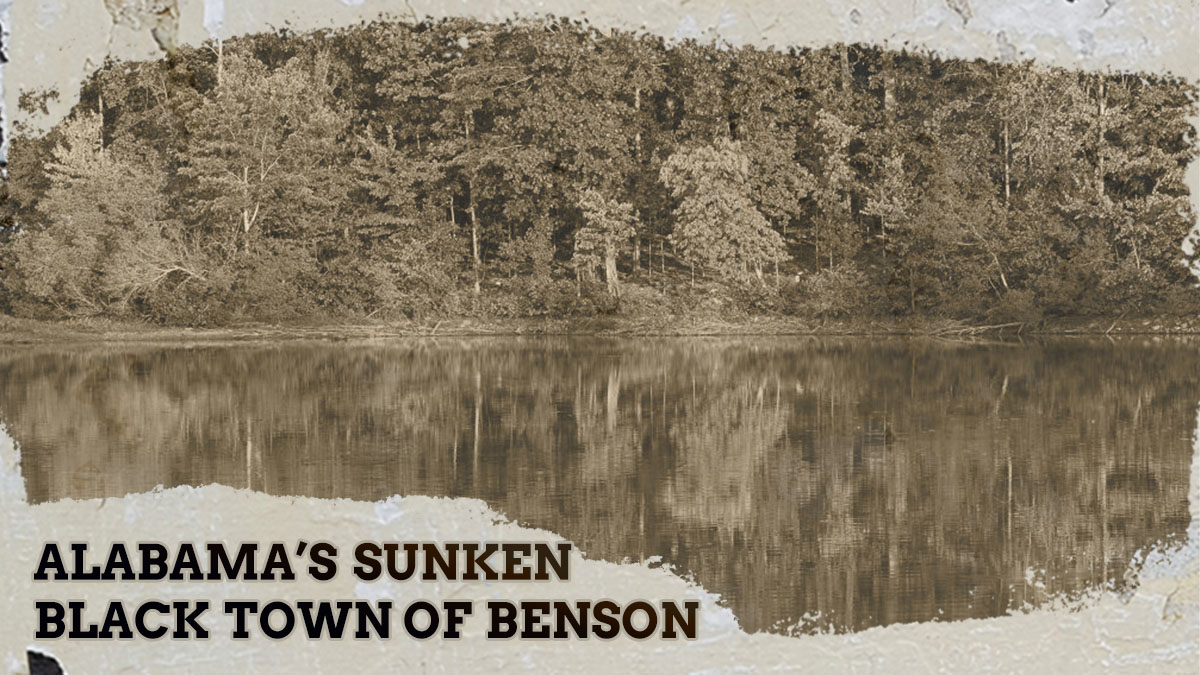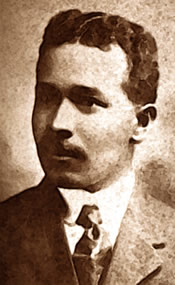The Black Town Under Lake Martin: A Father & Son’s Dream Of Greatness

Source: ione / iOne Digital
There are some extraordinary stories in American Black history. Many of which have been buried beneath the tides of time. Lake Martin in Alabama is home to one of those stories.
MORE: The Antebellum Tale Of Black Slave Girl Molly And The Haunting Of Sorrel-Weed House
In the 1800s, a Black man from Alabama named John Benson escaped the thumb of slavery, traveled across state lines to save his sister, then became a wealthy man who founded a Black community on the same land where he was once a slave–but that’s just half the story. His son would continue his legacy by building a school as well as the first Black-owned railroad in the U.S. and you’ve probably never heard of either of them.
The majority of this story is steeped in the truth. But because any remanence of the once flushing town was drowned under one of the largest lakes ever made, folklore prevails.
Lake Martin, which is located In Tallapoosa, Elmore, and Coosa counties in Alabama, was created in 1926 after the construction of the Martin Dam. The enormous Lake has nearly 700 miles of shoreline and covers 41,000 acres. The dam is used to generate hydroelectric power for the Alabama Power Company.
Because of its size, Lake Martin is a very popular tourist destination and it hosts events throughout the year. But before there was a lake there was John Benson and his small Black community near Kowaliga Creek.
John Jackson Benson was born September 1850 on the shores of Kowaliga Creek in Alabama. His slave owner James Benson owned a plantation in Alabama near Kowaliga Creek.
There is barely any mention of John’s mother or father, but they’re a few things we know. If John was born a slave, then his mother was a slave. John also had a sister he was very fond of who was sold to a plantation in Florida. In the 1850s it was not uncommon for slave owners to birth children with the Black women they kept in bondage, then sell them to other plantations. We don’t know if James was John’s father, but it wouldn’t be far-fetched.
Once James Benson died and his estate divided among his family, John was sent to Talladega, Alabama to work as a slave for an heir.
In 1861 the U.S. would begin its Civil War, which would loom over the country for the next five years.
By 1865, things would change for John and all he needed was little opportunity. He was freed after the Civil War and given a mule. After Congress passed the Confiscation Act of 1861, Union Generals would often confiscate property from rebels after a battle and give it to freed slaves.
Now that John was free, the young boy knew he was the only one who could save his sister. With his newly acquired mule, John headed from Alabama to Florida to bring his sister home so they could start a new life. A young Black man traveling alone right after the end of the Civil War was a death wish, but he went anyway.
With his life in jeopardy every day, John searched through the plantations of Florida for an entire summer until he finally found his sister. With a new life ahead of them the two went back to Alabama to begin a new.
The Benson Plantation was home to John and although he was a slave growing up on the Kowaliga Creek, the land still meant so much to him and his family. If he wanted that land, then he needed money and the best place to get it at the time was the Shelby County coal mines. In the early 1900s coal was big business in the area. Thousands of miners worked mines in cities scattered across Shelby and Bibb County.
John moved to Shelby and worked the mines for sixty cents per ton. He worked tirelessly until he finally saved up $100. It might not have seemed like much, but it was enough to leave the coal mines behind, head back to his home near Kowaliga. He used the money to buy some land from his former slave owners’ estate and began to work the land. For the next 10 years, John would slowly acquire more land from his former slave owner’s estate and by 1890, he owned 160 acres of land.
A Black man born a slave, only to years later buy the land he once slaved over; The epitome of poetic justice.
But John didn’t stop there. Because of the lack of slave labor after the Civil War, many White farmers didn’t have enough manpower to work their large plantations. John saw more opportunities and bought more land each year. John also paid workers, using Black and white labor and by 1898 he had amassed 3000 acres of land. On it, he built a massive farmhouse, a brickyard, a sawmill, a cotton gin, and a compression mill. The community produced corn, cotton, sugar, and well as different types of wood, and over 40 families were housed on the land.
John’s new fortunes allowed him to become the local bank. He began bankrolling mortgages for white and Black buyers as well as lending money to white neighbors. Once a slave, now a rich and powerful man with generational wealth. All three of his children would receive a college education, which was rare for a Black family in the late 1800s. John Benson had accomplished so much and his son Will would continue to build on his father’s legacy.

Source: Ben Russell historic files / Ben Russell
William E. Benson was born in 1873 to John and Julia Benson. Growing up watching his father build the community he grew up in, young John wanted to follow in his dad’s footsteps. Like his father, Will valued education. He first attended Fisk University in Nashville, TN but eventually graduated from Howard University in 1885.
After college, William brought his newfound education home and continued to build on the community his family had built. William believed for his community to thrive they needed education. While in college he created a plan to build a school on the grounds of his family’s land. William wanted to raise the standard of living for his community by teaching them to read, training industrial skills, as well building moral character in children.
William took his idea to his father and John agreed to give his son 10 acres of land to build his school. William’s ambition didn’t go unnoticed by local whites. In 1896 someone set fire to his store, burning many of his possessions, but William didn’t waver.
The Kowaliga Academic and Industrial Institute was incorporated in 1898. The school educated young Black children in the community for almost 40 years. He even had a board of trustees which included Booker T. Washington and Oscar Garrison Villard.
In 1913, Kowaliga Academic had over 300 students, a modern library, a band, and both a YMCA and YWCA. Students learned valued skills in agriculture and science. Some learned how to Blacksmith and cooks, others learned Sewing and basket weaving. It was truly a blessing for a community of Black who had no other means of education.
Will, like his father never stopped dreaming big. While his school was thriving, Will had goals on bringing a railroad to his community’s doorstep. In 1900, he founded The Dixie Industrial Company which produced lumber and processed cotton. The company also built the Dixie Line in 1914, which was the first Black-owned railroad in the company. The company had customers all over the world. But the railroad would be short-lived as World War I would change the landscape of shipping products and goods overseas. William Benson would sadly die in 1915 before his father from a lingering illness. Kowaliga would continue to shape young minds for a decade after his death. John Benson died on Nov. 3, 1925.
Benson’s town and the Kowaliga school was an amazing display of fortitude and perseverance, but it didn’t last forever. America’s evolution swallowed so much Black history in this country. Alabama Power Company began construction on the Martin Dam in 1923. Once completed in 1926, the dam created heavy upstream flooding that sunk the town of Benson, Sousanna, and some Native American lands.
Who knows what could have been of the Kowaliga school and the town created by John Benson and his family, it was given an actual chance to survive. Regardless they deserve our praise as two of the founders of Black excellence.
SEE ALSO:
The Haunting Of Lake Lanier And The Black City Buried Underneath
There’s A Black Village Under Central Park That Was Founded By Alexander Hamilton’s Secret Black Son
[ione_media_gallery src=”https://newsone.com” id=”3844698″ overlay=”true”]


